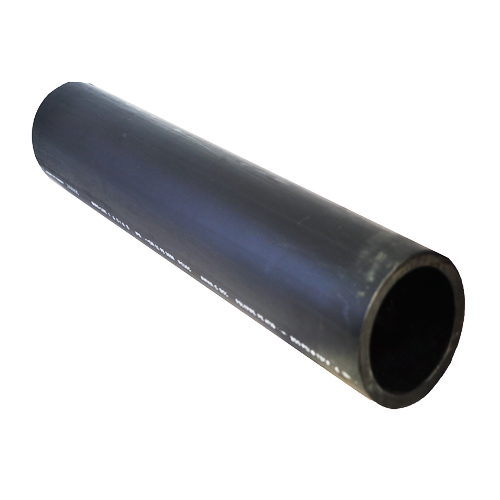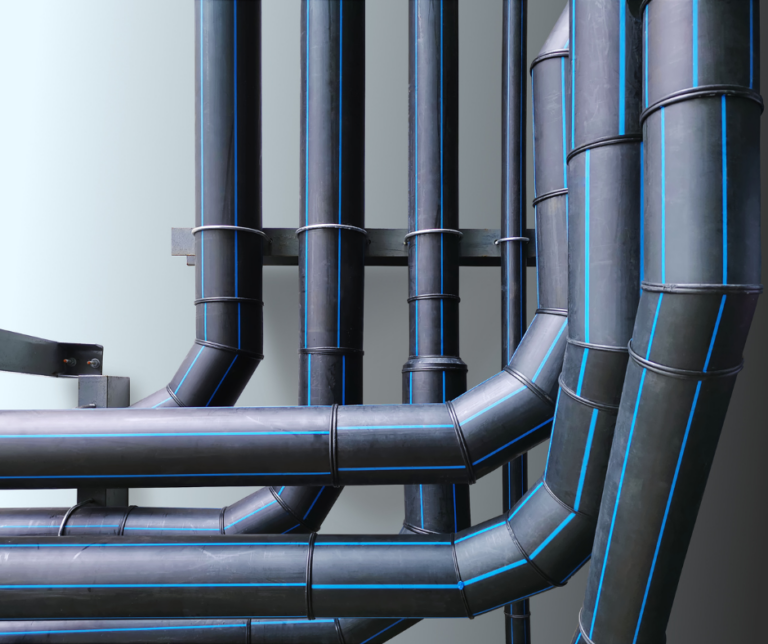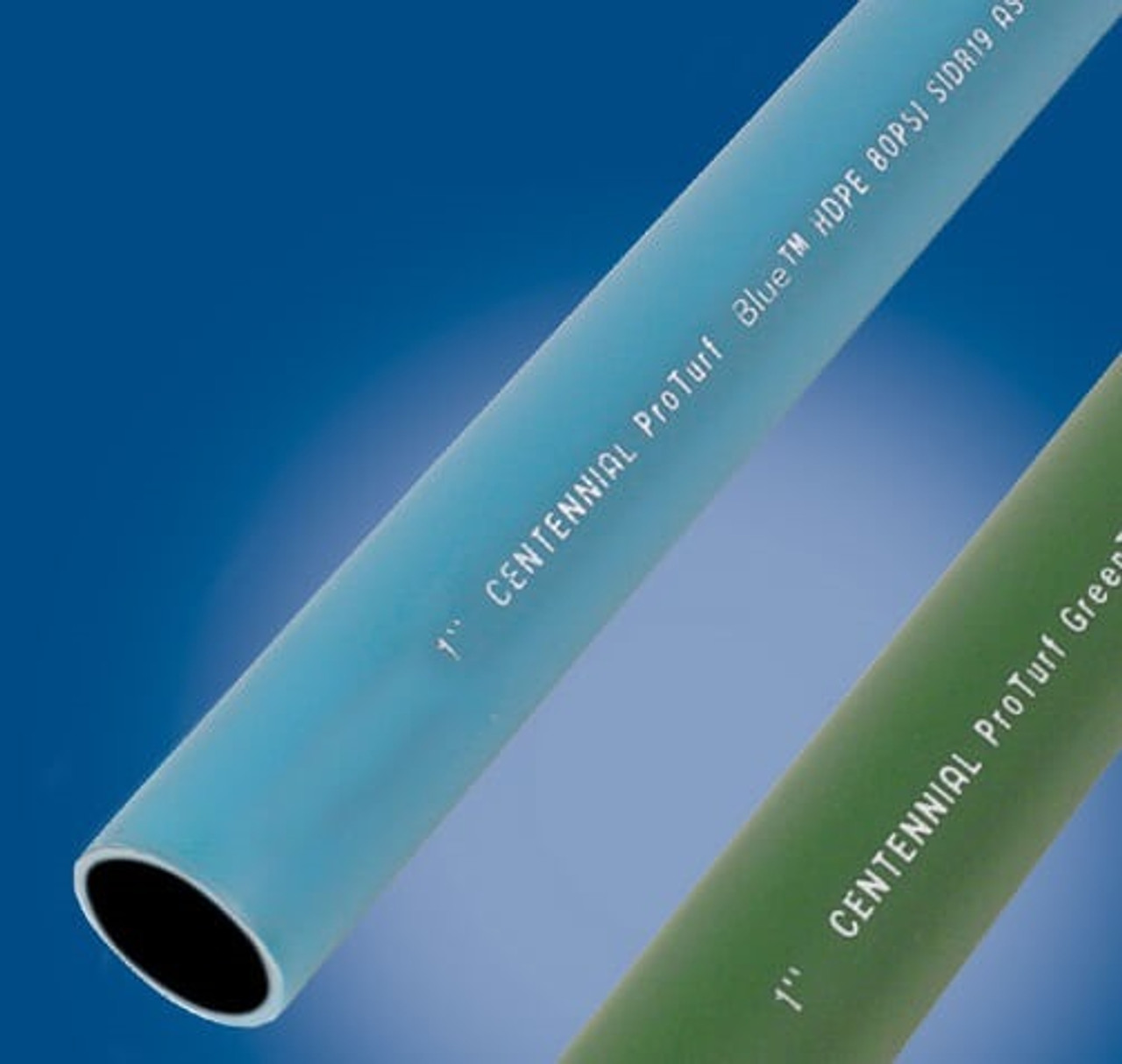Why Texas hdpe pipe manufacturer Is Leading in Advanced Pipe Solutions
Wiki Article
Check Out the Production Refine Behind High-Quality HDPE Pipeline and Its Applications
The production procedure of top quality HDPE pipelines is elaborate and methodical. It begins with the choice of raw products that boost efficiency. Following this, ethylene goes through polymerization to create material, which is after that shaped via extrusion. Quality control is critical, making certain that the last product fulfills stringent standards. Nonetheless, the journey of HDPE pipes doesn't end with manufacturing. Their applications throughout numerous industries disclose a wider importance worth analyzing.Comprehending HDPE: Residences and Advantages

High-density polyethylene (HDPE) is a versatile polycarbonate known for its longevity and resistance to different ecological elements. This product displays excellent tensile toughness, making it suitable for requiring applications. Its low-density framework adds to a light-weight product, facilitating convenience of managing and installation. HDPE additionally showcases amazing resistance to chemicals, which reduces degradation when exposed to severe compounds.
The material's low moisture absorption further enhances its durability, making it excellent for usage in pipelines and tank. Furthermore, HDPE is immune to ultraviolet (UV) radiation, guaranteeing that products preserve their honesty even when subjected to sunlight. Its adaptability enables for the production of detailed shapes without endangering stamina. The green nature of HDPE, frequently acquired from recycled products, includes to its appeal, advertising lasting practices in manufacturing. In general, these properties and advantages make HDPE a recommended selection for numerous commercial and customer applications.
Raw Product Choice for HDPE Manufacturing
The choice of raw materials for HDPE production is necessary to verify the final product meets the desired requirements and top quality criteria. High-density polyethylene (HDPE) is primarily produced from polymerized ethylene, originated from fossil fuels such as gas or petroleum. The high quality of these feedstocks substantially affects the mechanical and thermal buildings of the final HDPE.Ingredients likewise play a considerable function in enhancing HDPE's performance, consisting of anti-oxidants, UV stabilizers, and colorants, which enhance sturdiness and resistance to environmental factors. The option procedure should take into consideration not just the chemical composition of the raw materials however also their handling features to assure effective manufacturing.
Moreover, the sourcing of raw products should prioritize sustainability and compliance with environmental laws, as responsible techniques are vital in today's market. Inevitably, cautious raw material choice lays the structure for generating high-grade HDPE pipelines suitable for varied applications.
The Extrusion Process: Forming HDPE Pipeline
The extrusion process plays an important role in shaping HDPE pipelines, starting with meticulous material preparation strategies that assure suitable circulation and uniformity. Just as important is the style of the die, which directly influences the final dimensions and surface area quality of the pipe. Together, these elements add considerably to the performance and top quality of HDPE pipe production.Material Preparation Methods
Effective production of HDPE pipelines starts with careful material preparation techniques, specifically the extrusion process. During this phase, high-density polyethylene material is first dried out to eliminate moisture, making certain perfect flow attributes. The material is after that fed right into the extruder, where it undertakes home heating and melting, changing into a viscous state. This home heating process is thoroughly controlled to preserve the product's stability and efficiency. The molten HDPE is required via a die, forming it into a constant pipe type. Correct temperature management throughout extrusion is essential, as it directly affects the product's residential properties and the end product high quality. When shaped, the HDPE pipeline is cooled and reduced to specified sizes, prepared for subsequent processing and applications.Die Layout Relevance
Accuracy in die design plays an essential duty in the extrusion process of HDPE pipes. The die offers as the last shaping tool, directly affecting the pipe's dimensions, wall thickness, and surface area coating. A properly designed die warranties uniform material circulation, minimizing issues such as abnormalities and vulnerable points. The geometry of the die should be enhanced to suit the specific properties of HDPE, including its thickness and thermal actions throughout extrusion. Furthermore, the cooling rate of the product as it goes through the die can substantially influence the pipe's structural integrity. Consequently, purchasing sophisticated die modern technology is crucial for manufacturers aiming to create premium HDPE pipelines that fulfill sector standards and client expectations.Quality Control Steps in HDPE Manufacturing
Various variables affect the quality of HDPE pipeline manufacturing, reliable high quality control measures are important to assure uniformity and integrity in the last item (Midland TX HDPE Pipe Fittings in Stock). Secret top quality control techniques consist of extensive product assessment, validating that the raw polyethylene fulfills well-known standards for pureness and density. Throughout the extrusion procedure, criteria such as temperature level, pressure, and cooling time are very closely kept track of to preserve dimensional accuracy and structural integrityAdditionally, post-production screening is essential; suppliers usually perform hydrostatic examinations to examine the pipe's stamina and resistance to pressure. Aesthetic evaluations for surface area flaws additionally enhance quality assurance. Certification from appropriate requirements organizations, like ASTM or ISO, offers an extra layer of credibility. By carrying out these extensive quality assurance actions, producers can reduce defects, enhance efficiency, and make sure that the HDPE pipes satisfy the certain needs of various applications, eventually bring about client contentment and trust in the item.
Applications of HDPE Pipeline Throughout Industries
HDPE pipelines are used across numerous fields due to their toughness and flexibility. In water circulation systems, they assure effective shipment, while in wastewater administration, they give trustworthy remedies for waste transportation. Additionally, farming irrigation networks benefit from HDPE's resistance to deterioration and flexibility, making it an optimal choice for contemporary farming techniques.
Water Circulation Equipments
A considerable variety of markets depend on high-density polyethylene (HDPE) pipes for efficient water circulation systems. Recognized for their toughness and resistance to corrosion, HDPE pipes are commonly utilized in community water system networks, farming watering, and commercial applications. Their light-weight nature assists in easy handling and setup, lowering labor prices and time. In addition, HDPE pipes can accommodate numerous pressure levels, making them ideal for both low and high-pressure systems. Midland TX HDPE Pipe Fittings in Stock. The versatility of the product allows for seamless combination into existing facilities, decreasing the requirement for comprehensive excavation. Additionally, HDPE's resistance to chemical leaching assurances that the water provided continues to be secure and clean, making it an ideal choice for preserving the top quality of safe and clean water throughout different fieldsWastewater Management Solutions
Efficient water circulation systems likewise lead the method for innovative wastewater administration services, where high-density polyethylene (HDPE) pipelines play a considerable duty. Distinguished for their durability and resistance to deterioration, HDPE pipelines are perfect for carrying wastewater in different setups. Their flexibility permits very easy installation in complicated environments, reducing the demand for extensive excavation. Furthermore, HDPE's smooth indoor surface area minimizes rubbing, boosting flow prices and performance. These pipelines are likewise immune to chemical leaching, making certain that contaminants do not jeopardize the surrounding setting. Industries, towns, and therapy centers increasingly count on HDPE pipes for their reliability and long life, making them a preferred choice for modern wastewater monitoring systems. This adaptability underscores the vital relevance of HDPE pipes across numerous applications.Agricultural Watering Networks
Agricultural watering networks benefit substantially from the use of high-density polyethylene (HDPE) pipelines, which give reliable and reliable water shipment to plants. HDPE pipelines are light-weight, making them very easy to transfer and set up, while their adaptability enables numerous arrangements in varied surfaces. These pipes show superb resistance to corrosion, chemicals, and UV radiation, guaranteeing longevity in rough farming environments. In addition, their smooth indoor surface area decreases friction loss, optimizing water circulation and lowering power costs connected with pumping. The longevity of HDPE pipelines, frequently exceeding 50 years, adds to lower upkeep and replacement expenses. Farmers increasingly depend on HDPE pipes to improve watering efficiency and promote lasting agricultural practices, eventually leading to enhanced plant yields and source preservation.
Future Fads in HDPE Pipe Modern Technology
As the need for sustainable and effective framework grows, developments in HDPE pipe innovation are positioned to transform different industries. Emerging trends include the assimilation of wise modern technologies, such as sensors and IoT abilities, which help with real-time surveillance of pipe problems, decreasing upkeep expenses and stopping leakages. In addition, the growth of innovative production methods, such as 3D printing, is allowing the manufacturing of complicated, personalized pipe layouts that satisfy certain job needs.The focus on recycling and circular economic situation methods is driving the technology of HDPE pipes made from recycled materials, enhancing sustainability. Boosted jointing approaches, such as electro-fusion and mechanical fittings, are also enhancing installment effectiveness and reliability. Lastly, the expanding focus on environmental laws is pressing makers to embrace greener production processes, guaranteeing that HDPE pipes not only satisfy industry criteria but also promote a more sustainable future for facilities advancement.
Often Asked Concerns
Just How Does HDPE Contrast to Other Plastic Products?
HDPE surpasses several other plastic products regarding durability, chemical resistance, and adaptability. Its reduced density and high tensile stamina make it optimal for different applications, frequently surpassing options in both performance and long life.What Are the Environmental Effects of HDPE Manufacturing?
The environmental impacts of HDPE manufacturing consist of greenhouse gas discharges, power intake, and possible contamination from making procedures. Additionally, improper disposal can result in soil and water contamination, elevating worries about long-lasting eco-friendly results.Can HDPE Pipeline Be Reused?
Yes, HDPE pipes can be recycled. Numerous facilities accept used HDPE for processing, changing it right into new items. This reusing check here adds to sustainability efforts, reducing plastic waste while conserving resources and power in the production cycle.What Is the Life-span of HDPE Pipeline?

Just How Do Temperature Level Variations Impact HDPE Pipe Performance?
Temperature variants significantly impact HDPE pipe efficiency, affecting flexibility and strength. High temperature levels can cause softening, while reduced temperatures might trigger brittleness, inevitably influencing the pipe's sturdiness and suitability for various applications in varied settings.Report this wiki page